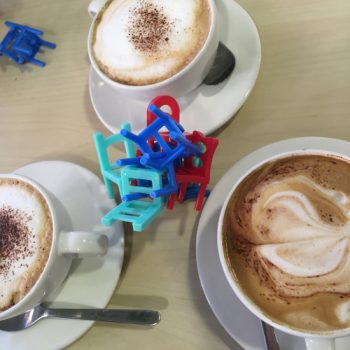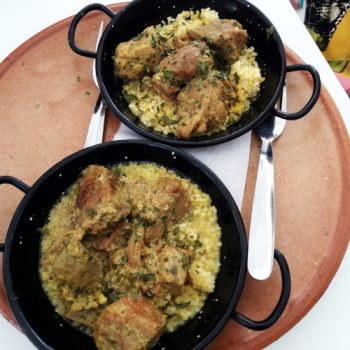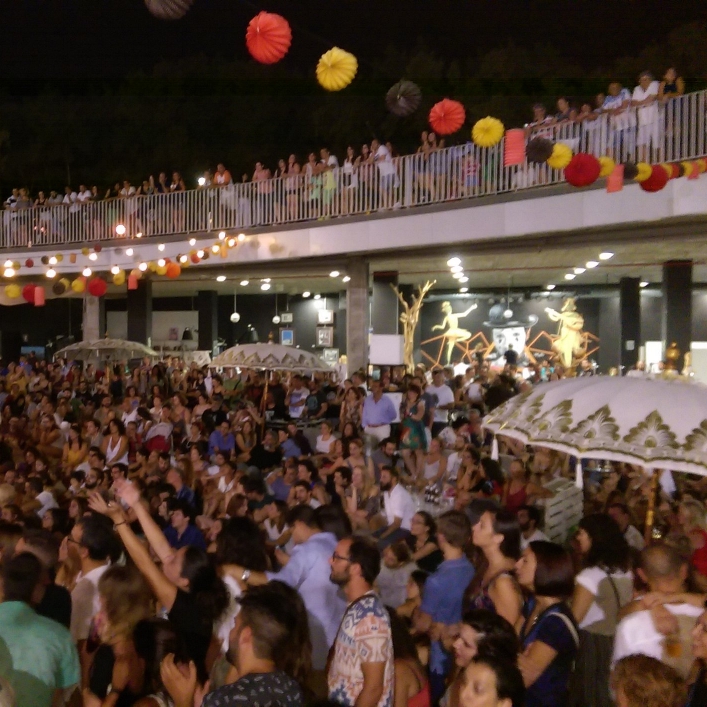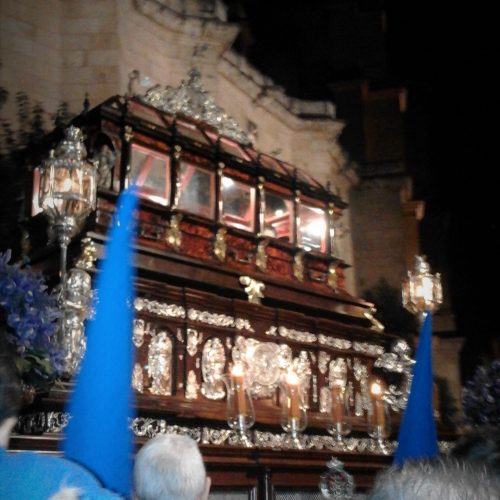
Semana Santa in Spain
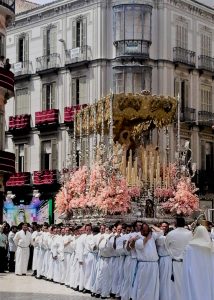 Dear Ellie,
Dear Ellie,
Semana Santa is a really important time in Spain when religious and non-religious citizens alike celebrate Easter. As you may have been able to guess, this holiday could be translated to “Holy Week” and is the week leading up to and including the Christian Easter holiday. As we’ve talked about before, though, the Catholic roots in Spain have become woven into the culture and so you will find that religious celebrations such as Semana Santa tend to be celebrated by all and considered a “Spanish thing,” rather than a “Catholic thing.”
Semana Santa begins on Palm Sunday (Domingo de los Ramos), followed by all the holy days, most notably Holy Thursday and Good Friday (Jueves y Viernes Santo). The big event, of course, is Easter Sunday (Domingo de Resurrección). Each day is filled with a variety of processions, each city and village having some of its unique and special variations. You can read more specifically about what can be expected on each day in this post.
Because Semana Santa is a national holiday, there is a lot of time off from work to observe it. Schools and public institutions will have the entire week off whereas private businesses have off starting on Thursday. In some cases, Easter Monday (the day following Easter) is observed as a day off as well, but this is not an official holiday in Spain.
If you find yourself in Spain during this holiday, keep in mind that this period is a great time to travel…but everyone is thinking the same as you! Don’t be surprised to find that flights and lodging may be more expensive or limited at this time and book whatever you can in advance. Likewise, when it’s a holiday in Spain, it’s a holiday for everyone! It will be much more difficult for you to find stores open during these days so be sure to stock up on everything you will need for the weekend by Wednesday! Read more tips here about incorporating the holidays into your travels and specifically what to be aware of when traveling during Semana Santa here.
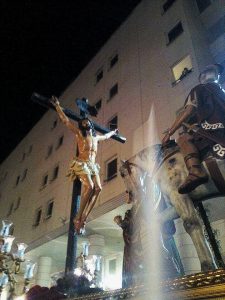 Traditions
Traditions
Procesiones: Carried out all throughout the Holy Week at different times and along different routes, processions are a form of celebration that you’ll surely come across during Semana Santa—whether you plan to or not. Unlike parades at other times of the year, these processions move quite slowly (and also go on quite long) as they include incredibly heavy pasos (think intricate and gold-plated sculptures) with Easter-relevant figures or scenes being carried on people’s shoulders throughout the city. It’s a humbling and unique experience to see firsthand, which we highly recommend. In this post, we’ve shared more details to help you understand the significance of each of the participants in the procesiones.
La mona de Pascua: Similar to the roscón de reyes, which is prepared specifically to be eaten on Three King’s Day, la mona de Pascua is a special dessert in connection with Easter. Although it can take on a variety of forms, as well as be made with or without chocolate and/or a cream filling, the element that ties all of the varieties together are the whole eggs that are baked into the cake. Nowadays, it is common to paint the eggs and add colorful decorations, like feathers. A chocolate version is especially popular in Cataluña and other traditional versions are characteristic of the Murcia, Valencia, Aragón, and Castilla-La Mancha comunidades. In most regions, la mona is traditionally eaten on Easter Monday but, of course, customs vary from place to place.
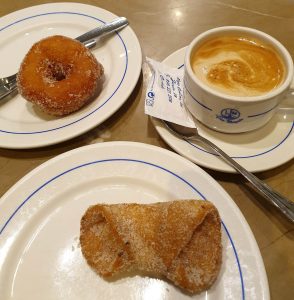 La iglesia: As we have discussed in further detail elsewhere on the blog, Spain has a unique relationship with its Catholic roots. The cultural and religious past of Spain encompasses important ties to Judaism and Islam, but Catholicism is currently the most-represented religion in the country, with approximately 70-75% of the population identifying as Catholic. However, it’s interesting to note that this doesn’t necessarily mean much on a daily basis.
La iglesia: As we have discussed in further detail elsewhere on the blog, Spain has a unique relationship with its Catholic roots. The cultural and religious past of Spain encompasses important ties to Judaism and Islam, but Catholicism is currently the most-represented religion in the country, with approximately 70-75% of the population identifying as Catholic. However, it’s interesting to note that this doesn’t necessarily mean much on a daily basis.
Throughout the year, many of these same people would tell you that they’re “not particularly religious,” but that tends to change during Semana Santa. Some Spaniards say that they consider this holiday as a cultural event, rather than a religious event, whereas others just seem to go-all-out and show their Catholic pride at Easter time. Many Spaniards get very involved in the processions and masses throughout the week. As in many countries where Christianity is prevalent, Easter Sunday is one of the biggest days for church-going in Spain.
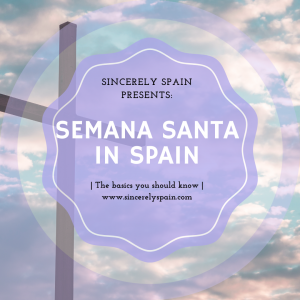 Of course, these are only the basics, but with this information you’ll be prepared for what you will see in Spain at this time of year and also understand a bit more about the Easter celebrations. Have you experienced Semana Santa in Spain? What was most shocking or interesting for you? If you haven’t, Be sure to check out the photos from Dani’s Semana Santa in 2018 for a better idea!
Of course, these are only the basics, but with this information you’ll be prepared for what you will see in Spain at this time of year and also understand a bit more about the Easter celebrations. Have you experienced Semana Santa in Spain? What was most shocking or interesting for you? If you haven’t, Be sure to check out the photos from Dani’s Semana Santa in 2018 for a better idea!
Sincerely,
Spain


